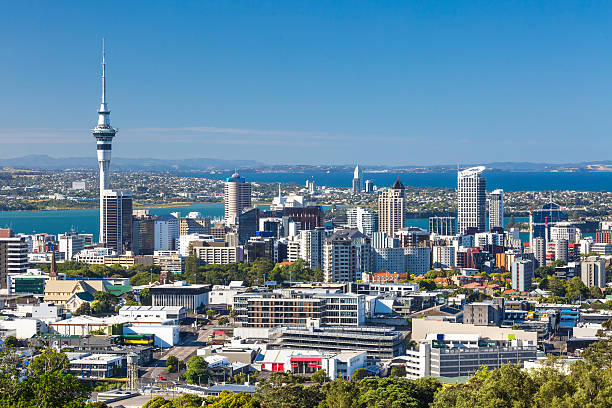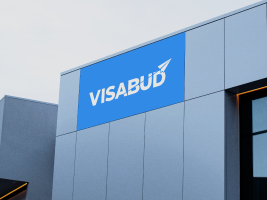South Korea Travel Guide: All you need to know to visit South Korea in 2024
Welcome to South Korea
Welcome to South Korea
The popularity of K-pop in music and the accessibility of South Korean productions on streaming platforms have increased tourists’ interest in South Korean culture. And it’s a location worth visiting! Some highlights are neighborhood markets, beautiful temples, and incredible urban parks. This thorough South Korean travel guide will provide you with the most recent information and guidance you need to make trip plans there.
Documents Checklist for South Korea
- A passport with at least 6-month validity
- Sufficient funds.
- South Korea ETA.
- Return airline ticket.
Essential South Korea Travel Information
Currency – South Korean won (KRW). $1 is equivalent to approximately ₩1,384.45.
Daily budget for 1 person – ₩118,323 ($85).
Languages – The official spoken language in South Korea is Korean.
Socket type – Type F, 220V supply voltage, and 60Hz.
Time zone – Greenwich Mean Time (GMT) +09:00.
Top 3 cities to visit – Seoul, Busan, and Incheon.
Top 3 landmarks/monuments – National Museum of Korea, Jeju Island, and National Maritime Museum.
Typical Costs and Budget for South Korea
Daily spending – Around ₩118,323 ($85) per person/day on a budget vacation.
Meals – ₩30,541 ($22).
Transport – ₩17,227 ($12).
Hotel – ₩107,021 ($77) for two people.
It will cost, on average, $1,196 for a weeklong trip for two people.
Transport and Best Ways to Travel Around South Korea
You may travel across South Korea utilizing the public transit system. Buses run across the country, a high-speed train connects the cities on the Korean Peninsula, and ferry boats may take you to the islands scattered off the West coast.
However, you may tour the nation with a rental car and an international driving license if you prefer a private vehicle. A word of caution: South Korean drivers rarely brake as they approach pedestrian crossings, so avoid doing so to avoid being hit from behind. Be extremely cautious to prevent collisions because they are accustomed to running red lights.
You can get there anywhere you need to travel in a city via the local bus and metro systems. They may be purchased using Transport Cards, and certain taxis will also take them as payment.
Safety in South Korea
Technically, the Korean War is still raging in East Asia. Although the Republic of Korea and North Korea seldom engage in military combat, tensions remain high, and missile testing occasionally occurs.
Avoid large-scale public meetings and protests because they frequently devolve into violence. In addition, be advised that using, possessing, or trafficking illicit narcotics carries severe consequences in the nation. Minor crimes can sometimes occur despite the low crime rate, especially in large cities like Seoul.
Weather in South Korea
You wouldn’t enjoy outdoor activities during South Korea’s harsh winter, lasting from November until mid-March. Only the southern coast experiences temperatures over zero in January; the north-central region can experience temperatures as low as -3.5 °C, and Seoul can experience temperatures as low as -20 °C.
The spring (mid-March to May) has cold temperatures that progressively warm up. As it rains frequently, you should have an umbrella with you. It’s the most frequent time of year for yellow dust, a phenomenon that creates a distinctive haze and can irritate the eyes and cause breathing difficulties. 11.8 °C is the average temperature.
There are hot, humid, and rainy summer months of June through August.
Although there might be significant amounts of rain, there are also beautiful days for visiting parks and even beaches. The temperature can reach 36/38°C on the warmest days.
The ideal season to travel to South Korea is autumn. The weather is pleasant from September through late November, with highs around 20 or 22 °C and less precipitation than in the summer and spring.
Popular Cities and Towns in South Korea
Seogwipo is a fantastic location for natural attractions on Jeju Island. A rugged coastline, steep waterfalls, and lovely beaches are all there.
Seoul – The population of the capital is 25 million. It has fantastic restaurants, historic palaces, and night markets to experience local food and culture.
Busan is one of the major tourist sites in the nation and has an important port. Mountains and magnificent beaches are available for tourists to explore.
Must Do and See in South Korea
Take a nature walk on Jeju Island. A Geopark, Biosphere Reserve, and Cultural Heritage Sites may be found on the 1,848 km2 island.
Visit Seoul’s National Museum of Korea. More than 220,000 cultural objects from antiquity, the middle ages, and early modern history are preserved there.
An authentic South Korean nightlife experience may be had by participating in a karaoke night at one of the many karaoke bars.
Typical Food to Try in South Korea
Jjigae – Many different types of jjigae can be found in Seoul. Typically, this Korean cuisine consists of beef, seafood, or vegetables in a broth spiced with gochujang, ganjang, soybean paste, or saeujeot, salty fermented shrimp.
Kimchi is a traditional Korean cuisine that dates back more than 2,000 years. It is made of fermented salty fish, Korean cabbage, radish, pumpkin, onion, ginger, scallion, chili powder, crushed garlic, and those ingredients.
Noodles are topped with raw cucumber slices and a blend of salty black soybean paste, sliced pork, and veggies in the Korean meal known as jajangmyeon.
Vaccine Information for South Korea
Understanding what standard vaccinations and COVID-19 precautions are necessary to enter South Korea is crucial. Therefore, you are advised to visit the CDC website to learn about all immunization requirements for Korean disease control and any suggested guidelines or medication lists.
Fun Facts about South Korea
- When born, Koreans are one year older. Be aware that there is a Korean and international age since children perceive themselves as one year old from the moment they emerge from the womb.
- Because of its serene surroundings and stunning vistas, the nation is also known as the Land of the Morning Calm.
- Black Day, which falls on April 14th, is a special day for single individuals to honor their alone state. The date offers them the chance to find solace in their loneliness.
Related Articles

5 min read
New Zealand Introduces Key Changes to Post Study Work Visa : What You Should Know
According to the government, this change will provide students with greater flexibility in their academic choices while ensuring they remain eligible to work. For many students, studying abroad is a
Read More
5 min read
The Singapore visa processing time for Indian citizens
Singapore is a small island located in the Malay Peninsula in Southeast Asia. It is one of the most economically developed countries in the world. Singapore is a fantastic place
Read More
5 min read
How Much Does an Australia Trip Cost from India?
If you are planning a trip from India to Australia, you must follow some of the points. that are : Planning Budget Traveling date and time To which place you
Read MoreA visa for South Korea is a stamp or endorsement that South Korean government authorities place on a passport to authorize the holder’s entry into the country. For your visit, visas must be obtained through the South Korean embassy or consulate.
You can obtain a tourist, transit, or visit visa, based on how long you want to stay in South Korea or how many days.
Upon rejecting your application visa, you can reapply or write to the Republic of Korea Embassy to contest the decision.
Applying within the three-month window following the Korean Embassy’s visa issuance for South Korea is recommended.
Up to two months or two weeks before the date of your trip, you may submit your needs.
